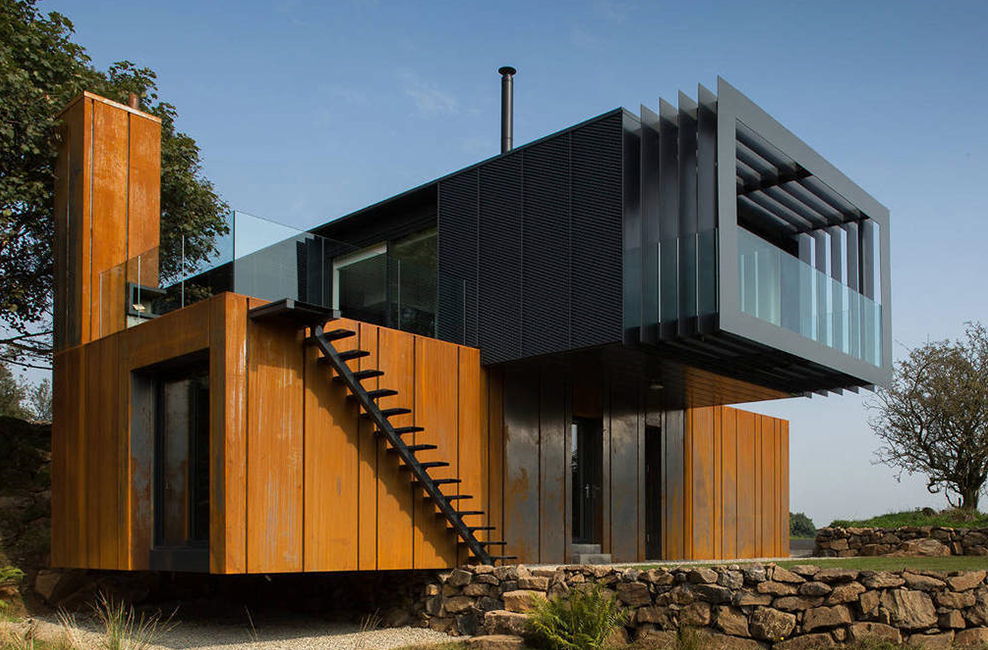Shipping containers make great offices in factories. Stack six of them like plywood, add an external staircase and you’ve got an instant office block. However, some architects say they are not worth the hype. Thinking of getting one?
It’s not the material that springs to mind when building a dream home. However, several recent homes have attracted some attention in the media. The first is a home built from four containers by Patrick Bradley, a farmer and architect from Northern Ireland and featured on the TV program Grand Designs. Mr Bradley designed the interior and exterior of the containers, bought from a shipping container supplier in Belfast. The containers were welded together in the shape of a cross and certainly impressed presenter Kevin McCloud. It impressed the judges at the Royal Institute of British Architects too, recognised at their 2015 excellence awards.
But the trend is just getting started. A recent design by builder Todd Miller of Zeigler Build used 31 shipping containers. The Brisbane property features four bedrooms over two levels. The master covers the entire upper level, with extensive walk-in robes and a private ensuite with tiled mural. Other features include a mezzanine reading room, a pull out queen wall bed in the rumpus room, an art study, workshop, gym space, water tank and saltwater pool.
Container homes and offices sound trendy, cost-effective and eco-friendly but some architects say they are not worth the hype and could actually be quite a problem. Ted Crowe of Nova Deko Homes Brisbane said: “Interest in shipping containers has increased enormously but not all of it is positive. Some love them and some love to hate them”.
Shipping container designs are seen as being ‘green’ because they re-use old containers. But CEO of Australian manufacturer Container Build Group Jamie van Tongeren said his company only uses brand new containers because “It’s definitely unsafe to use the old ones, they’re really the unknown. I wouldn’t touch them with a ten-foot pole”. Used shipping containers can have high levels of chemical residue; they are coated in lead-based paint to withstand salt water. Containers’ structural integrity can also be compromised if they are dented, he said. In fact, the average container produces 450 kilograms of hazardous waste before it can be used as a structure.
Mark Hogan, principal architect of New York firm Openscope Studios, argues that shipping containers are unsuitable for large-scale housing projects because of the difficulty in fitting them with heating and cooling systems. Where projects use multiple containers, extensive steel reinforcement is required, particularly when cuts have to be made in the metal, and this exercise can be very expensive.
Elaine Petitgout of Boxman Studios in North Carolina points out that: “Shipping container homes are rarely more cost-effective, comfortable, or more attractive than conventional homes”. Instead, the advantage is the way a container’s shape allows for creativity and flexibility in design. Petitgout said shipping containers are ideal for industrial office spaces, hospitality suites, trade show booths, and pop-up retail stores.

